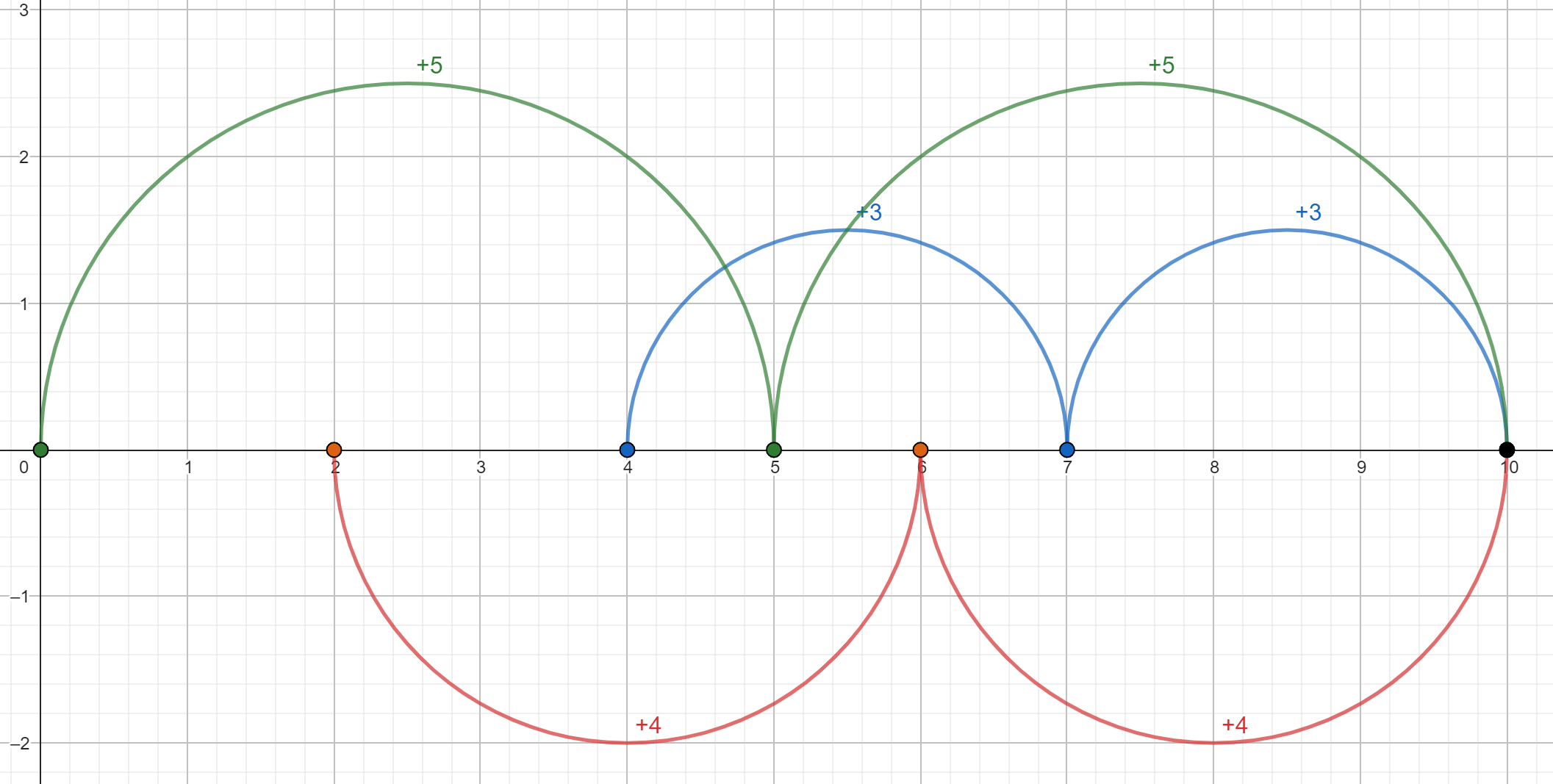Section 49.3 The Proof
Subsection 49.3.1 Initialization
First we need an ordering on the collection of polynomials p1=p1(x),p2=p2(x),…,pm=pm(x) such that when we form a collection of difference polynomials, we already know that we can find a monochromatic set for this new collection. Let A={p1,p2,....,pm} be a set of integral polynomials. Let D be the maximum degree of these polynomials. For 1≤i≤D, let Ni be the number of distinct leading coefficients of polynomial in A of degree i. Define the weight vector of A to be (N1,N2,…,ND). We say that (N1,N2,….,ND)<(M1,M2,…,MD) if there exists r such that Nr<Mr and Ni=Mi for i>r. This is easily seen to be a well ordering. The induction will be on the collection of polynomials in this ordering. Suppose that all polynomials have the same degree and the same leading coefficient. If we take differences between one polynomial and shifts of another polynomial, then we always obtain a polynomial of a lower degree. This gives some indication that it is the number of distinct leading coefficients that is important rather than the number of polynomials.Subsection 49.3.2 Outer Induction
We do a multiple induction, first let P={p1,p2,…,pm}. We will do induction on the weight vector of P, however we need the theorem in it is compact form. Outer Induction Hypothesis: Suppose that p1,p2,…,pm are integral polynomials. Then for all k there exists N such that whenever [N] is k–coloured there exists a and d such that the set {a,a+p1(d),a+p2(d),…,a+pm(d)} is monochromatic. Suppose that the outer induction hypothesis is true for all collections of polynomials with weight vectors less than that of P. We need to show that it is true for P. We will say that a set A of points aj for 1≤j≤m is focused at a if there exists d such that aj−a=pj(d). We will say that the sets A1,A2,…,Ar are colour focused at a if each set Ai is focused at a, each set Ai is monochromatic, and the sets Ai for 1≤i≤r have distinct colours. This is exactly the condition that forced a to have a colour different from that of any of the Ais.Subsection 49.3.3 Inner Induction
For all r≤k there exists N such that if [N] is k–coloured either there exists r colour focused sets A1,A2,…,Ar together with their focus a, or there exists a and d such that the set {a,a+p1(d),…,a+pm(d)} is monochromatic. We can see that from the hypothesis the result is immediate. Set r=k, now if there exists a and d such that the set {a,a+p1(d),…,a+pm(d)} is monochromatic then we are done. Otherwise there exists A1,A2,…,Ar colour focused at a. The focus must have the same colour as one of the set Ai thus that point with the set is monochromatic.
Claim 49.3.1.
The sets {ai,j+Nqdi,j(t):1≤j≤m} for 1≤i≤r−1 together with the set {a+Nq0,j(t):1≤j≤m} are colour focused at a−p1(Nt).
Proof.
First, observe that by construction each of the points \(a_{i,j}+Nq_{d_{i,j}}(t)\) has the same colour as the point \(a_{i,j}\text{.}\) Thus the set \(\{a_{i,j}+Nq_{d_{i,j}}(t):1\leq j\leq m\}\) has the same colour as \(A_i\text{.}\) Thus these colours are all distinct. Also each of the points \(a+Nq_{0,j}(t)\) has the same colour as \(a\text{,}\) so the set \(\{a+Nq_{o,j}(t):1\leq j\leq m\}\) is monochromatic. Also, \(a\) has a colour distinct from that of the other sets.
Thus we only need to check the following:
\begin{align*}
a_{i,j}+Nq_{d_{i,j}}(t)-(a-p_1(Nt)) \amp = p_j(d_i)+p_{d_{i,j}}(Nt)+p_1(Nt)\\
\amp =p_j(d_i)+p_j(Nt+d_i)-p_j(d_i)-p_1(Nt)+p_1(Nt)\\
\amp =p_j(Nt+d_i)
\end{align*}
and we have
\begin{equation*}
a+Nq_{0,j}(t)-(a-p_1(Nt))=p_{0,j}(Nt)+p_1(Nt)=p_j(Nt)\mbox{.}
\end{equation*}
